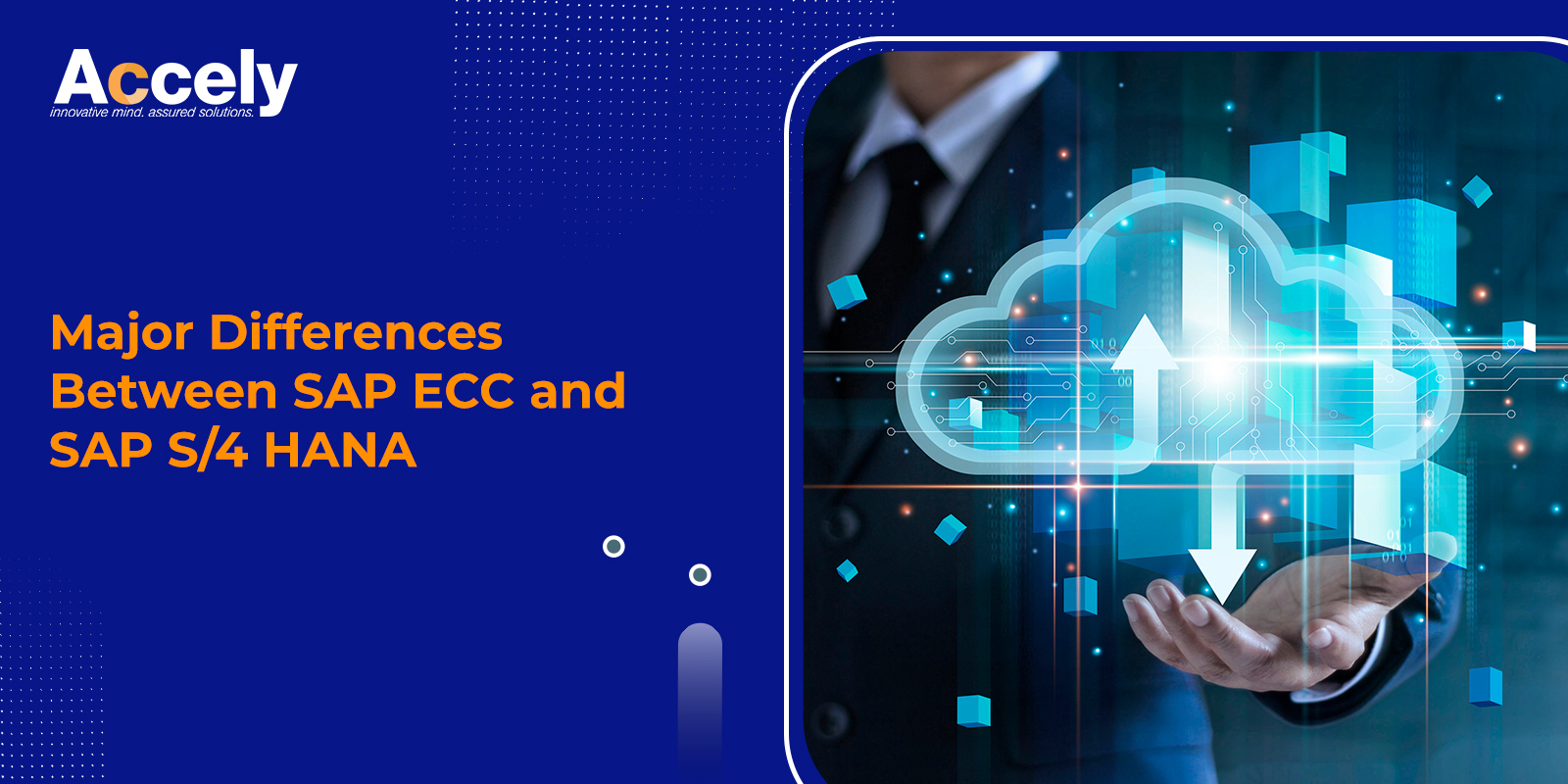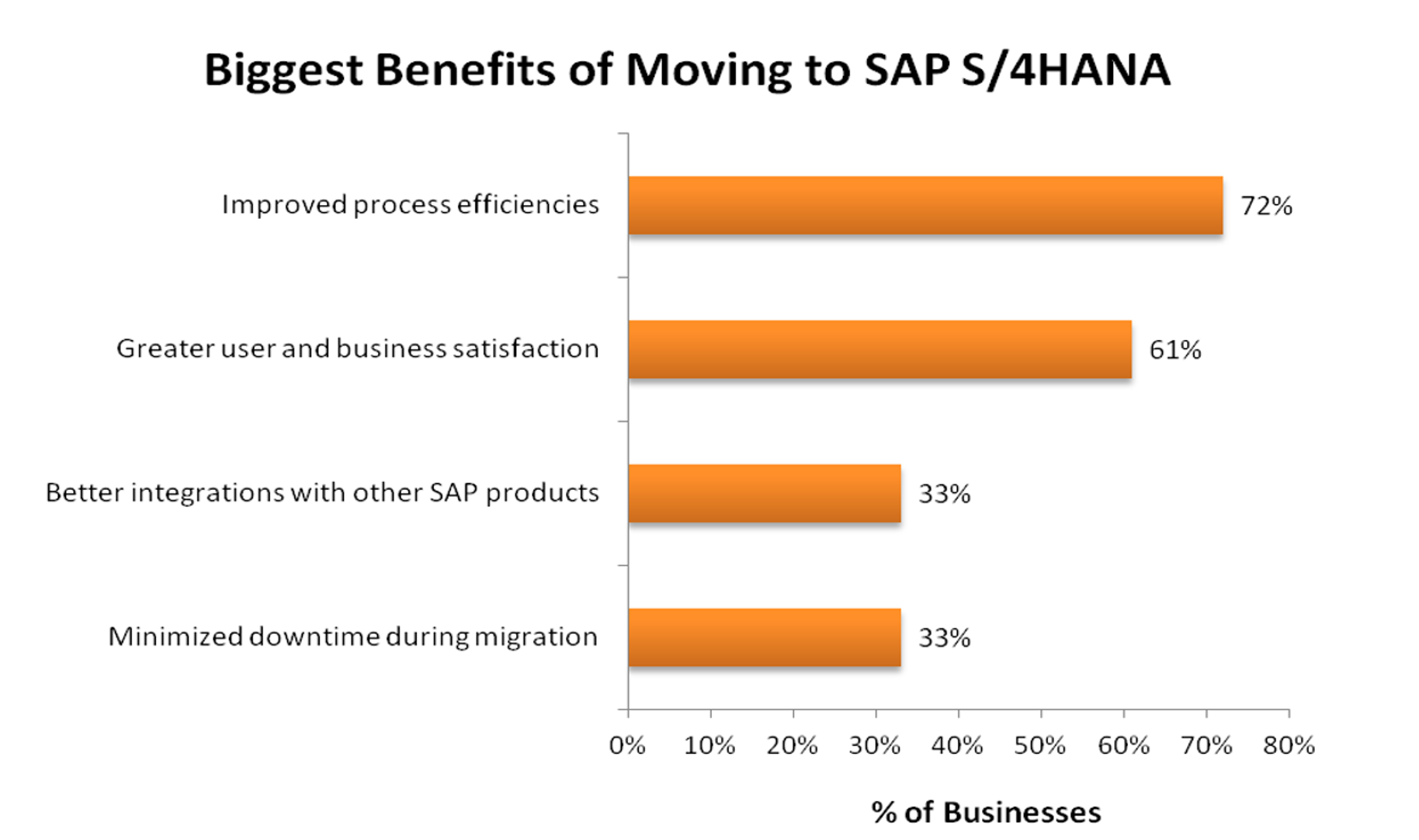Major Differences Between SAP ECC and SAP S/4 HANA
26-Sep-2023
SAP ERP Central Component, commonly referred to as SAP ECC, is fast approaching its end-of-support phase. Over the next five years, SAP will actively promote and facilitate the migration of its ECC customers to their cutting-edge fourth-generation ERP solution, SAP S/4HANA. This transition marks a pivotal step forward in the world of enterprise resource planning, as SAP S/4HANA offers a host of advanced features and capabilities designed to empower businesses with real-time insights, improved agility, and enhanced efficiency. To stay competitive and future-ready, organizations are encouraged to embark on the journey to migrate to SAP S/4HANA, ensuring they can harness the full potential of this modern ERP platform for sustainable growth and innovation.
To gain insight into the business advantages that SAP’s ERP customer base can derive from S/4HANA, let’s begin by examining some of the primary distinctions between SAP ECC and S/4HANA. This blog will help you understand the differences and can be your guide for ECC to S/4HANA.
Difference Between SAP ECC and SAP S/4 HANA
SAP ECC Modular Structure
SAP ECC encompasses a range of distinct modules that organizations can employ to optimize processes across various business domains such as Finance, Logistics, HR, Product Planning, and Customer Service.
This modular structure permits organizations to select and implement specific modules according to their requirements. However, this adaptability introduces intricacies into the system. Each module necessitates individual configuration, and any alterations in one module can potentially impact others. Consequently, organizations must meticulously evaluate the implications of upgrades or customizations on each individual module.
In contrast, S/4HANA has introduced numerous simplifications, both in the IT framework and data architecture. Serving as an intelligent ERP system, it minimizes complexity, enabling organizations to enhance the speed and efficiency of their operations. S/4HANA’s product strategy acknowledges the imperative for customers venturing into new markets or adopting fresh business processes to swiftly integrate new functionalities. This agility in adding extensions is facilitated by S/4HANA’s Cloud Platform. Furthermore, S/4HANA’s recent and forthcoming roadmap encompasses the inclusion of all ECC functions, including APO, CRM, SRM, EWM, and TM.
SAP S/4HANA In-Memory Computing Capabilities
While SAP ECC has the flexibility to operate on third-party databases like Oracle DB or IBM DB2, S/4HANA exclusively relies on the SAP HANA database. The SAP HANA database boasts formidable in-memory capabilities that form the bedrock of S/4HANA’s ERP functionality. This unique feature allows data to reside in the primary RAM, enabling the system to retrieve data at a significantly faster pace compared to other database types, which necessitate fetching data from the hard disk.
Furthermore, the database employs a column-based structure, ensuring that only relevant columns are accessed, resulting in expeditious retrieval of the necessary data. This design permits parallel processing of diverse columns and also achieves more efficient data compression.
Notably, the HANA database facilitates real-time reporting and predictive analysis by enabling Online Transactional Processing (OLTP) and Online Analytical Processing (OLAP) to occur within the same system. Lastly, it dispenses with the need for aggregates, indexes, or historical tables. Instead, aggregates are generated dynamically within the HANA database based on line item tables.
SAP S/4 HANA Provides a Single Source of Truth in the Universal Journal
The Universal Journal, also known as ACDOCA, stands as a consolidated single-entry table merging the data frameworks of FI, AA, CO, CO-PA, and ML. This streamlined approach to data management simplifies operations, as information is directed into a solitary table rather than being distributed across multiple tables.
Additionally, SAP S/4HANA introduces MATDOC, a fresh line item designed for inventory management. This innovation leads to a reduction of approximately 26 tables when compared to the table structure in SAP ECC.
SAP S/4HANA brings about simplifications in various dimensions, notably streamlining table and data structures to enhance efficiency. Additionally, outdated or non-essential functionalities have been eliminated and replaced with improved features. In line with S/4HANA’s strategy to reduce complexity, the S/4HANA Cloud edition minimizes core development and allows non-core customizations through external applications, ensuring a seamless adoption of new functionality.
Standard integrations are readily available to seamlessly incorporate other cloud solutions such as SAP SuccessFactors Employee Central, SAP Ariba, IBP, C4C, and Commerce, simplifying the overall IT landscape. Furthermore, the HANA Cloud Platform (HCP) offers the flexibility to enhance S/4HANA’s capabilities through extensions and the development of new applications. These guided customizations encompass integration, UI/UX, IoT, Analytics, and database-level services, presenting a simplified yet effective technological blend that greatly benefits SAP S/4HANA customers.
Front-End Innovation Utilizing Fiori Apps
SAP S/4HANA adopts SAP Fiori as its front-end interface, offering robust personalization capabilities to enhance the user experience significantly. One noteworthy feature is the Fiori Lighthouse scenarios, which present users with real-time reports on an intuitive overview screen.
Another intriguing addition is the Fiori app called Copilot, which serves as a digital assistant, also available as a mobile app. Many consider Copilot to be a transformative element within S/4HANA. It’s important to note that, given the extensive and comprehensive nature of S/4HANA, the aspects mentioned here represent only a fraction of the innovations it brings. For a more comprehensive understanding of the changes introduced by S/4HANA, you can explore further details on the SAP portal.
Migrating from ECC to S/4HANA yields a multitude of compelling business benefits. Let’s delve into the key advantages:
- S/4HANA revolutionizes business processes by ushering them into the realm of real-time operations. It achieves this by streamlining data, eliminating redundancies, and optimizing tables, thereby significantly enhancing the speed and agility of business operations.
- The transition to S/4HANA simplifies the entire IT landscape and leads to a reduction in the organization’s overall data footprint. This leaner approach makes business processes and operations more agile and efficient.
- With S/4HANA’s ability to handle large datasets within a single system, substantial savings are realized in hardware and operational costs, along with considerable time savings. This translates to a reduced total cost of ownership, which is particularly advantageous for organizations contemplating an early migration to S/4HANA.
- S/4HANA empowers stakeholders and teams with access to live business data and real-time embedded analytics. This invaluable capability enhances business planning, execution, and the generation of reports.
- Real-time insights stemming from S/4HANA’s digital core facilitate faster decision-making processes. This agility in response to dynamic market conditions and competition ultimately contributes to revenue and profit improvement.
SAP’s unwavering commitment to enhancing customer experience (CX) is prominently evident in S/4HANA, thanks to its simplification efforts and comprehensive digital core, offering end-to-end scenarios. This commitment positions S/4HANA as an intelligent, next-generation platform, geared towards delivering an exceptional CX.
Are you prepared to embark on the journey from ECC to S/4HANA? Accely is your trusted partner, equipped with the expertise to seamlessly facilitate your transition. Our arsenal includes ready-to-deploy data service templates tailored specifically for S/4HANA. Our innovative methodology, coupled with a profound comprehension of the intricacies involved in data, objects, and tables in the context of S/4HANA, ensures minimal production downtime. We specialize in achieving the harmonious consolidation of systems and a smooth migration in a single concerted effort, providing you with a hassle-free transition experience.












